Off grid living is more than just canned goods and foraging off the land. You want a surplus, and with that comes the need to keep that surplus nice and edible – especially when there could be food shortages potentially cropping up on the horizon. The good news is that you’ve got plenty of easy, off grid fridge options – both unpowered and powered – to keeping your perishables in good condition.
The unpowered options include the following:
- Camping Coolers
- Pot in Pot Refrigerators
- Storage Buildings (Above and Below Ground)
Your powered options are, as seen below:
- Solar Fridges
- Propane Fridges
- Converted Freezers
The unpowered options usually require more hands-on maintenance efforts, but can be repaired or even remade with minimal fuss. The powered options cannot be reproduced, but are more convenient for day-to-day living. Powered options can store meat for limited periods of time, while unpowered ones simply cannot due to potential compromises.
The decision depends on preference as much as locale. Some options will prove more effective in certain climates, as seen below.
Off Grid Fridge: Keeping Your Food Cool
Camping Coolers
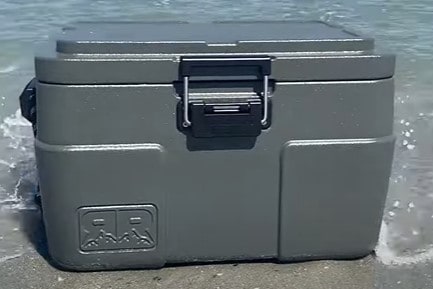
Ice cooler boxes are certainly the easiest option on this list, providing decent insulation and minimal maintenance needs for functionality. They don’t wear down or require new parts from usage strain. They’re also sitting at a very affordable expected price range of fifty dollars brand new – some can even be found at about thirty dollars during sales season!
The ice inside cooler boxes can also last for surprisingly long – about two to four days at minimum and can keep for longer than a week in ideal conditions.
Unfortunately, that’s also the shortest storage time between all the options on this list. Solely using camping coolers will require regular trips collecting ice chunks, which makes for a regular hassle with certain types of perishables.
Camping coolers also have another notable drawback: melted ice. This can lead to soggy or ruined food if improperly stored. Avoid storing certain perishables, such as meat, in your camping coolers. You could potentially get by this limitation with vacuum sealing, but there are more than a couple of notable drawbacks to that method.
This issue can be somewhat managed by turning to gel packs for cooling purposes. You could also freeze water in plastic bags for similar usage, though depending on thickness it could very well rupture and spill regardless.
Another issue is condensation buildup, which only gets exacerbated when the cooler is opened and exposed to warmer outside air often. Due to this, it cannot accommodate vegetables safely and is often restricted in use to only sealed perishables.
Camping coolers depend on ice to function, and shouldn’t be relied on as a primary utility for off grid refrigeration. Unlike most other entries on this list, camping coolers aren’t impaired by climate differences. This makes them a great catch-all option and can be brought along while traveling. If you can produce ice regularly, it should serve you well.
Coolers are a great initial choice to bring to your off grid home until you can decide on a more permanent method.
Pot in Pot Refrigerator
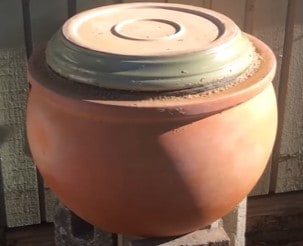
Also known as the zeer pot, pot in pot refrigerators have millennia of successful usage under their belt. These work off the principle of evaporative cooling, which uses water as its main cooling component.
As the name suggests, pot in pot refrigerators use two of them – a porous outer shell and a watertight inner one – alongside an interstitial layer of either water or damp sand. The outer liquid layer draws away heat from the inner pot and does spectacular work in dry climates.
It’s very advantageous, as the only required component for cooling is water. It can even use salt water for this process, which is invaluable when your drinking stores are limited.
All it takes to maintain or even fashion your own is a rudimentary grasp of pottery and available materials such as clay or terracotta. While it won’t get as cold as a proper refrigerator, it can handle most general produce just fine.
Zeer pots are traditionally used to store vegetables after harvest – they prevent their spoilage by mitigating both the high temperatures and low humidity conditions that plagued collection seasons. They can only store a limited quantity of goods and prove less effective at high humidity levels.
They also cannot safely accommodate the storage of meat due to their regulating temperature, and should not be trusted to food especially vulnerable to salmonella or E. coli contamination.
That said, zeer pots have no moving components to compromise and are very cheap storage options. They also have no dependence on either electricity or ice, requiring only water – which should be one of the priority renewable resources at your disposal in off grid conditions.
Pot in pot refrigerators are a historical mainstay in a lot of cultures for a reason, and can do a great job keeping your gardening yields from spoiling.
Storage Buildings (Above and Below Ground)
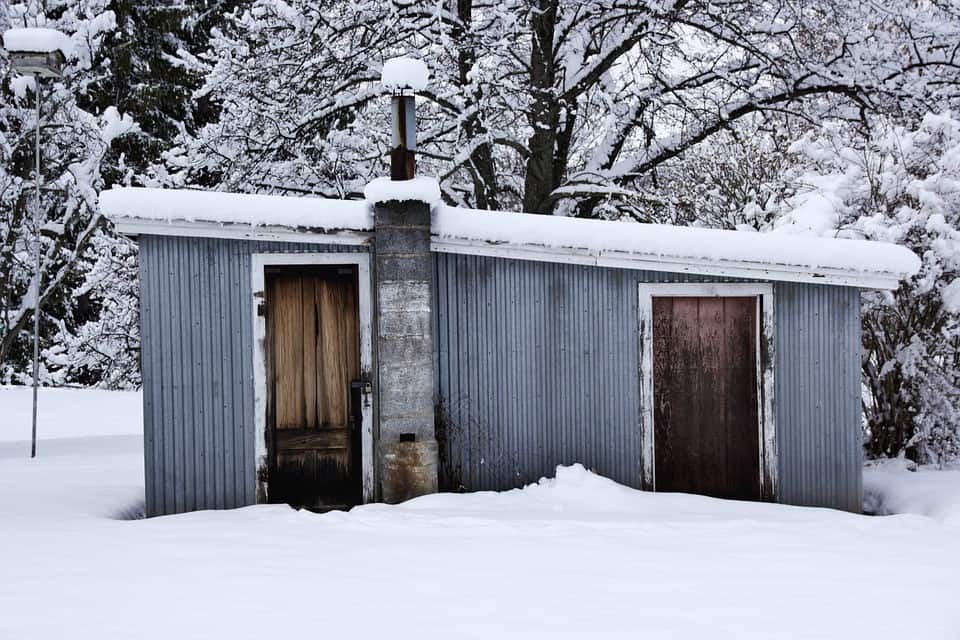
Dedicated storage is never a bad thing, and ice is cumbersome to haul. While they both rely on storage buildings for cooling, there are some pretty big distinctions in mechanics between the two.
Above ground storage buildings are better known as ice houses. Think of it as an upsized cooler borrowing mechanics from the pot in pot refrigerator. It can accommodate huge chunks of ice on the premises but remains susceptible to above ground temperature fluctuations.
You can provide effective insulation by storing your main ice container in a bigger box, padding the gap as necessary with scrap sawdust, leftover straw, or whatever else is available.
Ice houses can store huge quantities of ice, and with proper storage and insulation, these blocks can last for months at a time. Your main issue would be cutting the ice itself, which would take dedicated tools and time you may not have at your disposal.
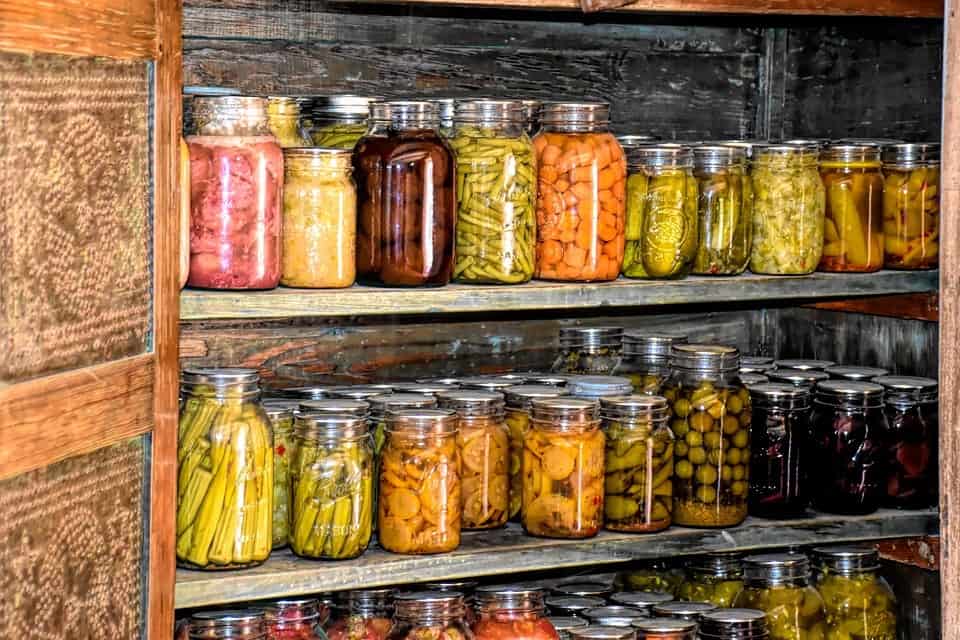
Below ground storage buildings are also known as root cellars and make up any storage location that leverages the earth’s insulating properties to their benefit. Their name comes from their original purpose, which was to safely store root crops past harrowing winters.
One of the most notable advantages to below ground storage methods is their constant temperature. At a relatively shallow depth (12-40ft) the temperature of the surrounding earth will remain constant, greatly aiding storage efforts.
Root cellars also require a high degree of humidity to retain moisture to combat evaporation. Simply put, underground storage is more convenient to maintain due to a combination of these factors.
They’re also more laborious to construct, given the additional excavation efforts ice houses don’t require. Root cellars cannot be constructed near bodies of water or septic systems for safety reasons.
Proper ventilation also needs to be installed to ensure constant airflow. Compromised ventilation could lead to mold growth, which is a serious concern when coupled with most root cellar’s very high humidity levels.
Ice houses and root cellars aren’t bad investments, but at the end of the day, this storage method basically requires converting or creating at least a room’s worth of space. And like the other unpowered entries on this list, cannot store meat safely.
Solar Fridges
It’s important to note the difference between solar-powered fridges and solar fridges – the former only utilize solar energy, while the latter are purpose-made to turn it into a single functioning unit.
There are a few notable drawbacks to solar fridges, however. The most pointed one is the steep upfront cost, with the price range for solar panels going upwards of $10,000 at best, with their batteries costing at least half of that. This amounts to a floor price of fifteen grand, but in practice, the general effective prices bracket usually falls between twenty and thirty grand.
Their low maintenance needs are also a bit deceptive – while the solar panels themselves can be managed with little fuss, the intricate components inside the solar fridge are a different matter.
Compressors, complex wiring, and refrigerant solutions are only a few examples of the complicated interplay of systems that make solar fridges tick.
Solar fridges can be expected to last for at least ten years, provided decent maintenance. Figuring out solar fridge maintenance can be tricky, with spare parts either rare, costly, or difficult to install.
If you can pull it off though, you’ll not only have great returns on investment but much freer shelves for storage for all the alternative fuels you won’t have to store!
Propane Fridges
Propane fridges tend to be overlooked when compared to their solar-powered counterparts, but actually have quite a bit going for them. While they don’t offer the same return on investment as solar variants, they get the same job done at much better initial expense on top of a whole host of other key benefits that edge them out against solar fridges.
Maintenance is also easier for propane fridges, requiring only proper ventilation and managing coupler cleaning needs.
Firstly, the dependence on propane isn’t as prohibitive living off grid as most people would expect. Propane actually keeps indefinitely, and its expected shelf life of thirty years is actually the expiration date of the material making up its container. A propane fridge can comfortably last for twenty years – double a solar fridge’s expectancy – and can easily last as long as your fuel.
Propane is also relatively cheap and easy to store, and the general consumption rate isn’t even bad. It’d take about eighty gallons of propane to power an average fridge for a year, which would still be just a fraction of the cost of what you’d spend on a solar fridge from the start.
While the idea of depending on a finite resource for off grid living seems harrowing at first glance, you can comfortably get decades of mileage of the product.
Set up is not only cheaper, but quicker as well. It can also function independently of weather conditions, unlike solar power. Propane fridges have a lot of advantages worth bearing in mind.
There are a few drawbacks to this means, despite it being one of the most popular methods for off grid living. The lack of returns is still a significant disadvantage, though it’s nowhere near as bad as most make it out to be.
It’s still dependent on a finite resource subject to both price fluctuations and scarcity. They also require proper dedicated ventilation channels to function and might struggle to maintain their internal temperatures in very cold climates.
Still, propane fridges and their respective fuel are very affordable for off grid living and aren’t dependent on the weather for their functionality. These make for a great choice for most of your food storage needs with minimal fanfare.
The divide between propane fridges and solar fridges isn’t as vast as most people would expect. Make sure to properly check for what would suit your needs best.
Converted Freezers
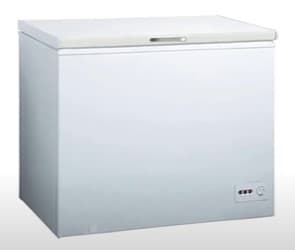
Converting a chest freezer into a refrigerator is actually pretty simple, though it’s best to have someone with electrical know-how pull it off safely. All that’s really needed is swapping the old thermostat for a new one, which shifts the ambient temperature to a less energy exhaustive degree.
The process is fast and straightforward, and the fridge thermostat can be purchased cheaply. All in all, converting old chest freezers makes for a great investment in off grid life.
Chest freezer conversions can also be done in under an hour, so the labor isn’t as daunting as most would expect it to be. The main reason this works out so well is the sheer difference in insulation.
Freezers boast about twice as much insulation compared to refrigerators. Better insulation coupled with lower maintenance temperature means much less work for your compressor – the part of the unit in charge of coolant regulation.
Freezer compressors usually stay active for around twenty odd minutes per hour. Lowering their threshold with the DIY change cuts this down to more than half of that, greatly slashing energy consumption in the process. Cold air also sinks, which when coupled with chest freezer design ensures your perishable goods will stay chilled with minimal compressor exertion.
This actually makes for one of the better off grid fridge options and has such low, economic energy usage (>100 kWh/year) that excess solar energy can be diverted to powering other functions.
Chest freezer conversions fall in a comfortable middle ground among solar and propane fridges, offering easier maintenance on top of efficient energy consumption. What the converted chest freezer has in storage efficiency, it very pointedly lacks in convenience.
While this isn’t as problematic in its original iteration – chest freezers are rarely used on a regular basis for houses – this could prove annoying over time. A packed converted freezer would be pretty cumbersome to manage, but that’s just a small price to pay for all of the boons it offers.
Final Thoughts
There are a lot of ways to keep your food cool, even when you’re living off grid from the world. Each of these ways offers their own pros and cons, and it’s up to you to decide what’d suit you and your family’s needs best.
